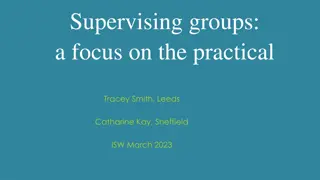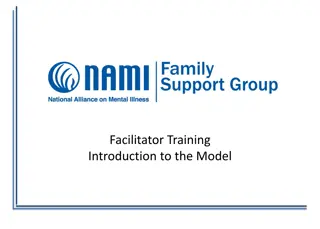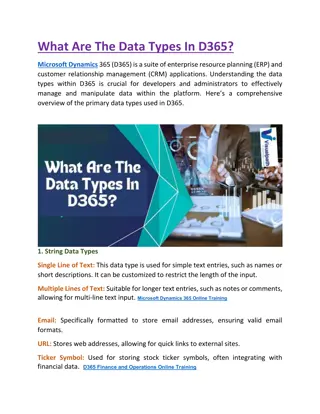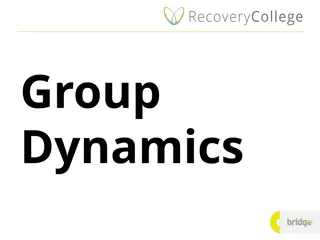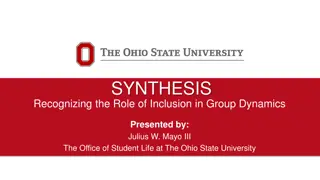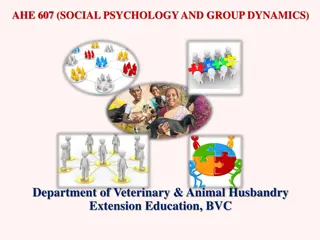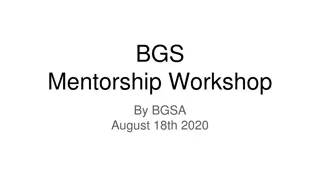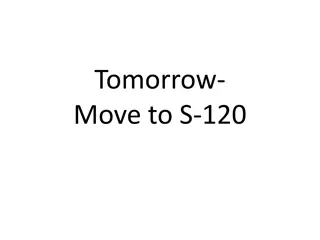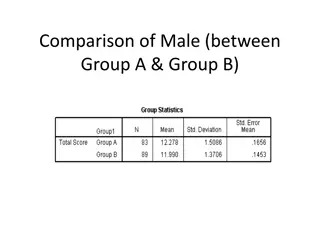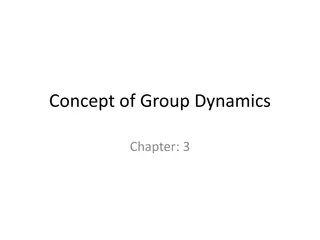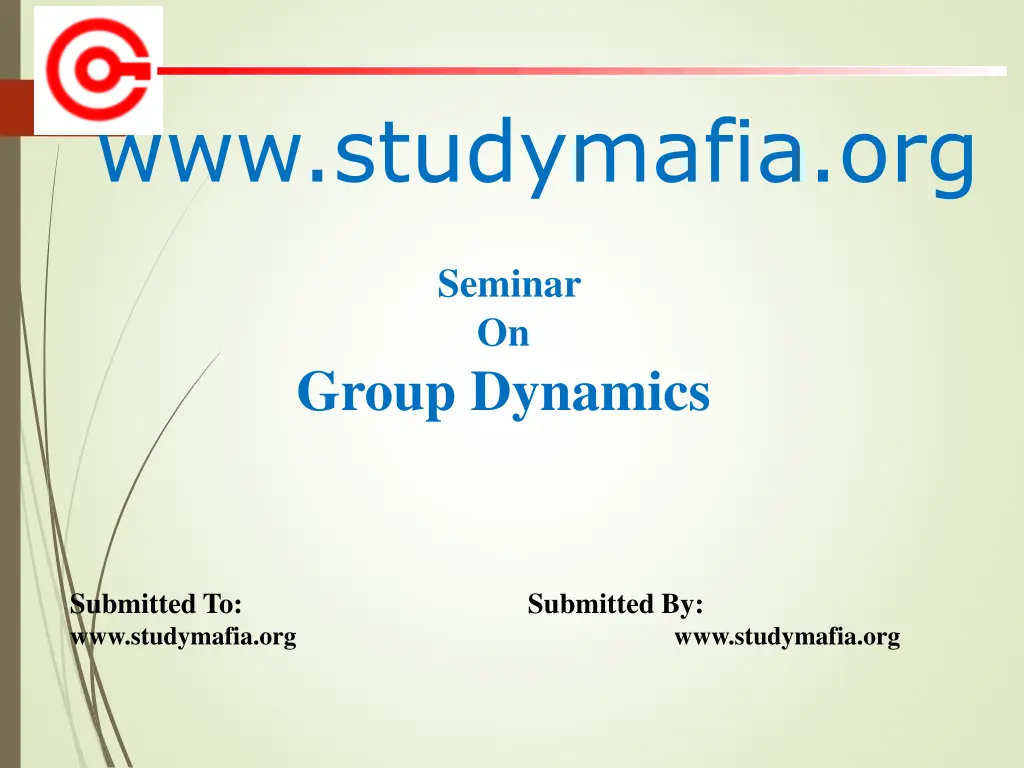
Understanding Group Dynamics: Key Concepts and Processes
Explore the intricacies of group dynamics, from defining groups and their characteristics to understanding the stages of group development. Learn about the importance of team building and how groups function effectively towards common goals.
Download Presentation

Please find below an Image/Link to download the presentation.
The content on the website is provided AS IS for your information and personal use only. It may not be sold, licensed, or shared on other websites without obtaining consent from the author. If you encounter any issues during the download, it is possible that the publisher has removed the file from their server.
You are allowed to download the files provided on this website for personal or commercial use, subject to the condition that they are used lawfully. All files are the property of their respective owners.
The content on the website is provided AS IS for your information and personal use only. It may not be sold, licensed, or shared on other websites without obtaining consent from the author.
E N D
Presentation Transcript
www.studymafia.org Seminar On Group Dynamics Submitted To: www.studymafia.org Submitted By: www.studymafia.org
Content Introduction What is Group Dynamics? What is A Group? Characteristics of a Group: Process/Stages of Group Development Types of Groups Eight Cs for Team Building References
INTRODUCTION A group can be defined as several individuals who come together to accomplish a particular task or goal. Group dynamics refers to the attitudinal and behavioral characteristics of a group. Group dynamics concern how groups form, their structure and process, and how they function.
What is Group Dynamics? Group dynamics deals with the attitudes and behavioral patterns of a group. Group dynamics concern how groups are formed, what is their structure and which processes are followed in their functioning. Thus, it is concerned with the interactions and forces operating between groups.
What is A Group? Every organization is a group unto itself. A group refers to two or more people who share a common meaning and evaluation of themselves and come together to achieve common goals. In other words, a group is a collection of people who interact with one another; accept rights and obligations as members and who share a common identity.
Characteristics of a Group: (a) 2 or more persons (if it is one person, it is not a group) (b) Formal social structure (the rules of the game are defined) (c) Common fate (they will swim together) (d) Common goals (the destiny is the same and emotionally connected) (e) Face-to-face interaction (they will talk with each other) (f) Interdependence (each one is complimentary to the other)
Process/Stages of Group Development Performing Task Norming Storming Adjourning Forming
Process/Stages of Group Development Contt . Group Development is a dynamic process. How do groups evolve? There is a process of five stages through which groups pass through. The process includes the five stages: forming, storming, forming, performing, and adjourning. Forming: The first stage in the life of a group is concerned with forming a group. This stage is characterized by members seeking either a work assignment (in a formal group) or other benefit, like status, affiliation, power, etc. (in an informal group). Members at this stage either engage in busy type of activity or show apathy.
Storming: The next stage in this group is marked by the formation of dyads and triads. Members seek out familiar or similar individuals and begin a deeper sharing of self. Continued attention to the subgroup creates a differentiation in the group and tensions across the dyads / triads may appear. Pairing is a common phenomenon. There will be conflict about controlling the group. Norming: The third stage of group development is marked by a more serious concern about task performance. The dyads/triads begin to open up and seek out other members in the group. Efforts are made to establish various norms for task performance.
Performing: This is a stage of a fully functional group where members see themselves as a group and get involved in the task. Each person makes a contribution and the authority figure is also seen as a part of the group. Group norms are followed and collective pressure is exerted to ensure the Process of Group effectiveness of the group. Adjourning: In the case of temporary groups, like project team, task force, or any other such group, which have a limited task at hand, also have a fifth stage, This is known as adjourning. The group decides to disband. Some members may feel happy over the performance, and some may be unhappy over the stoppage of meeting with group members.
Types of Groups COMMAND GROUPS. Command groups are specified by the organizational chart and often consist of a supervisor and the subordinates that report to that supervisor. An example of a command group is an academic department chairman and the faculty members in that department. TASK GROUPS. Task groups consist of people who work together to achieve a common task. Members are brought together to accomplish a narrow range of goals within a specified time period. Task groups are also commonly referred to as task forces. The organization appoints members and assigns the goals and tasks to be accomplished.
FUNCTIONAL GROUPS. A functional group is created by the organization to accomplish specific goals within an unspecified time frame. Functional groups remain in existence after achievement of current goals and objectives. Examples of functional groups would be a marketing department, a customer service department, or an accounting department. INTEREST GROUPS. Interest groups usually continue over time and may last longer than general informal groups. Members of interest groups may not be part of the same organizational department but they are bound together by some other common interest.
FRIENDSHIP GROUPS. Friendship groups are formed by members who enjoy similar social activities, political beliefs, religious values, or other common bonds. Members enjoy each other's company and often meet after work to participate in these activities. REFERENCE GROUPS. A reference group is a type of group that people use to evaluate themselves. According to Cherrington, the main purposes of reference groups are social validation and social comparison. Social validation allows individuals to justify their attitudes and values while social comparison helps individuals evaluate their own actions by comparing themselves to others.
Factors Affecting Group Behaviour: 1. Group Member Resources: 2. Group Structure: Group Size Group Roles Group Norms Group Cohesiveness 3. Group Processes:
Eight Cs for Team Building 1. Clear Expectations 2. Commitment 3. Competence 4. Control 5. Collaboration 6. Communication 7. Creativity 8. Coordination
Important Characteristics (i) Group dynamics describes how a group should be organised and operated. This includes pattern of leadership and cooperation. (ii) Group dynamics consists of a set of techniques such as role playing, brainstorming, group therapy, sensitivity training etc. (iii) Group dynamics deals with internal nature of groups, their formation, structure and process, and the way they affect individual members, other groups and the organisation as a whole. (iv) Group dynamics refers to changes which take place within groups and is concerned with the interaction and forces obtained between group members in a social setting.
What Causes Poor Group Dynamics? Weak leadership: when a team lacks a strong leader, a more dominant member of the group can often take charge. This can lead to a lack of direction, infighting, or a focus on the wrong priorities. Excessive deference to authority: this can happen when people want to be seen to agree with a leader, and therefore hold back from expressing their own opinions. Groupthink: this happens when people place a desire for consensus above their desire to reach the right decision. This prevents people from fully exploring alternative solutions.
What Causes Poor Group Dynamics?...... Free riding: here, some group members take it easy, and leave their colleagues to do all the work. Free riders may work hard on their own, but limit their contributions in group situations; this is known as "social loafing. Evaluation apprehension: team members' perceptions can also create a negative group dynamic. Evaluation apprehension happens when people feel that they are being judged excessively harshly by other group members, and they hold back their opinions as a result.
References www.google.com www.wikipedia.com www.studymafia.org


